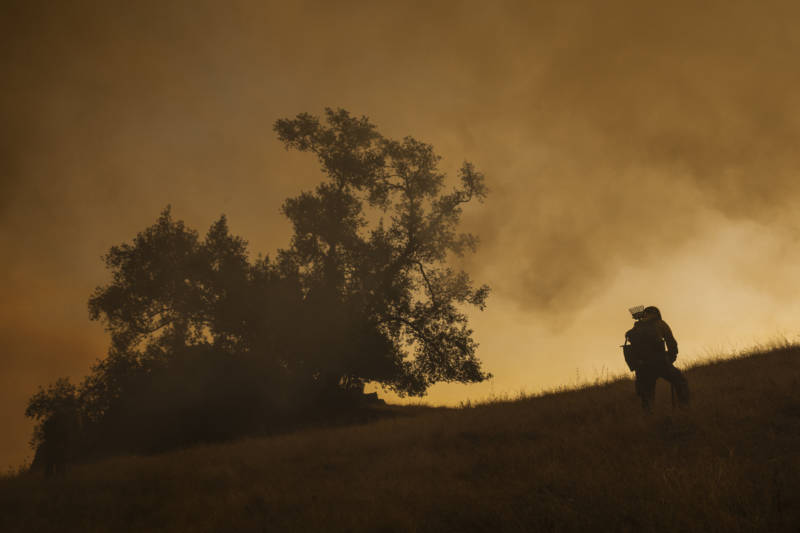Almost a week after it began, the Kincade Fire in Sonoma County is only 15% contained. Emergency officials and meteorologists say this fire has been so hard to control because intense winds have caused flames to spread rapidly and unpredictably.
Last Wednesday evening, high winds predicted for Sonoma County prompted power shutoffs in the region, and PG&E reported that equipment on a transmission tower near the fire’s origin broke right around the time it ignited.
On Sunday, winds blew with speeds upward of 90 mph; a single gust recorded from a PG&E weather sensor in northern Sonoma County passed the 100 mph mark. Fire officials warn that another high-wind event forecast for Tuesday night into Wednesday morning could continue to prevent crews from bringing the fire under control.
Brian Garcia, warning coordination meteorologist with the National Weather Service for the Bay Area, says several characteristics of the winds in the region make the current conditions “unprecedented.”
Three Events in Less Than a Week

